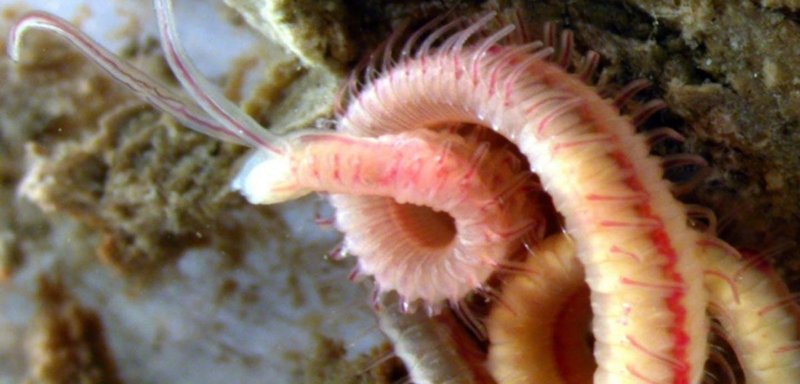
Honestly, identifying a mudworm is not just about having a keen eye—it’s about understanding their environment, behaviors, and some key identifying traits. There are various species, each with its own quirks, which makes the identification process both exciting and challenging. In this article, we’ll dive deep into field identification challenges when spotting a mudworm, using simple explanations and relatable examples to help you become a more confident identifier.
What Exactly Is a Mudworm?
Before we jump into the identification challenges, it’s worth understanding what mudworms really are. These creatures belong to the family *Axiidae* and can be found in a variety of habitats, primarily in soft sediments. Picture a muddy riverbank or estuary where these worms thrive. Mudworms are typically elongated and can vary in color, which adds to the confusion when trying to identify them.
One important characteristic to note is their segmented body. However, many worms share this trait, so it’s not a definitive identifier. It’s like being in a room full of people wearing similar outfits; you need more than just a glance to tell them apart.
To make things more complicated, mudworms can often be confused with other types of marine worms, like polychaetes. Their similar body structures can trick even seasoned enthusiasts. So, what does spotting a mudworm really involve?
The Challenge of Environment
The environment plays a huge role in identifying mudworms. They tend to live in muddy, low-oxygen areas, like estuaries or brackish waters. This murky habitat often makes it hard to see details. Think about trying to find a specific coin in a pile of dirt; the deeper you dig, the less clarity you have.
When you’re searching these areas, visibility can be compromised by factors like water turbidity or strong currents. You might have to use tools like small nets or even your bare hands to sift through the sediment. Patience is key here. If you’re too hasty, you might overlook a mudworm hiding among other organisms.
Additionally, the time of day can influence your search. Mudworms are often more active during low light conditions, which can make spotting them even harder if you’re trying to identify them during bright daylight.
Color and Shape Confusion
Let’s face it: color and shape can be deceiving. Mudworms are usually a mix of earthy tones—browns, greens, and even a hint of gray. This color palette is similar to many other small creatures inhabiting soft sediments. It’s like trying to find a chameleon in a rainforest; they blend in so well that they often go unnoticed.
But it’s not just their color that can mislead you. The shape of a mudworm can change based on its environment. When they’re in a constricted space or under stress, their bodies can contract, making them look different than when they’re relaxed. If you’re not familiar with their typical length and chunkiness, you might mistake a stretched-out worm for something completely different.
As you train yourself to spot these creatures, try focusing on distinctive features like the setae (tiny bristles) along their bodies. These can help give you a clearer picture of what you’re looking at, like clues in a mystery novel.
Behavioral Traits to Note
Understanding the behavior of mudworms can offer vital clues for identification. They often exhibit burrowing behavior, meaning they like to hide in the mud. This means you might not always see them wriggling about. Instead, you could notice small holes or tunnels in the sand. These signs can lead you to where they’re hiding.
You might be wondering, “How do I know if what I see is a mudworm and not, say, a common earthworm?” Well, mudworms tend to be more sluggish and less likely to dart away. If you spot a worm that seems hesitant to move or very slow to react, it’s worth checking out.
Common Misidentifications
There are several species that can easily be confused with mudworms. For example, polychaetes, a class of annelid worms, often live in similar habitats. They can have vibrant colors and different movement patterns, adding another layer of confusion.
Other mud-dwelling creatures like small crustaceans or even certain types of larvae can mimic the shape of mudworms. This is especially true in areas dense with life. You might want to take a moment to observe the creature’s movement and habitat. If it swims quickly, you’re likely looking at something other than a mudworm.
Remember that mudworms often have specific features, such as a tapered end. Familiarizing yourself with these traits can help you draw clearer distinctions among similar species.
Using Tools for Better Identification
If you’re serious about spotting mudworms, consider investing in some simple tools. A good magnifying glass can help you see finer details, while a net can be useful in capturing them without damage. Just like a photographer needs the right equipment for a great shot, you’ll be better equipped to identify mudworms with the right tools in hand.
Also, having a field guide can be beneficial. This can help you compare what you see in real time against documented characteristics. You may even download an app that focuses on marine life if you prefer digital resources. Many of these apps come with photos and descriptions, making it easier to cross-reference what you find.
Overall, arming yourself with knowledge and the right tools can make your adventures in identifying mudworms much more fruitful.
Final Thoughts on Mudworm Identification
Spotting a mudworm isn’t just a hobby; it’s an adventure filled with learning and exploration. From understanding their environment to distinguishing them from other species, each part of the process can be rewarding. While challenges in identification are part of the journey, they also add to the excitement of discovering something new.
So, next time you’re out in the field, take your time, observe closely, and enjoy the process. Remember, every great identifier started as a beginner, and each attempt at spotting a mudworm brings you closer to becoming an expert. Happy hunting!
